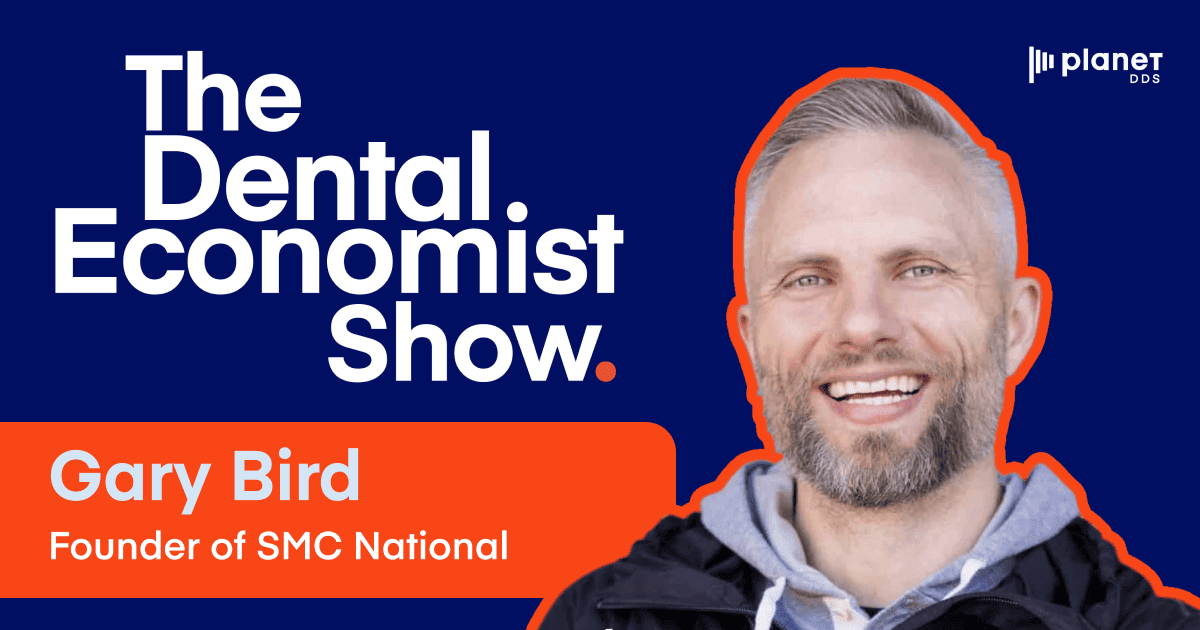Gary Bird on Answering the 4 Key Questions in Dental Marketing
In this episode of The Dental Economist Show, host Mike Huffaker is joined by Gary Bird, the founder of SMC National, a dental marketing company that aims to deliver new patient growth for dental groups.

In this episode of The Dental Economist Show, host Mike Huffaker is joined by Gary Bird, the founder of SMC National.
Join them as they discuss:
- Gary’s career journey
- Converting leads
- Standing out in the marketplace
- Tracking unanswered calls
- Answering key patient questions effectively
- Practical tips for achieving growth and success
Gary Bird is the founder of SMC National, a dental marketing company that aims to deliver new patient growth for dental groups. SMC National’s focus is to give partners a complete growth pipeline that doesn’t just generate leads, but turns more of them into happy, long-term patients for a higher ROI. Through SMC, Gary launched the Dental Marketing Manager Bootcamp, a two-day training program designed to empower individuals with the knowledge and tools needed to excel in their roles.
Episode Highlights
Call Response Misconceptions: Gary suggests that many dentists believe they only miss between 0 and 1% of calls. According to Gary, this is false. He encourages dentists to track their call logs and get the data, rather than trust their ears! The industry average is 35% of all calls go unanswered during normal business hours; Gary notes that that figure doesn’t even include after hours calls. It’s possible that if you’re spending $10,000 on marketing, $3500 of this would be lost just by not picking up the phone.
The Four Key Questions and Self-Scheduling: While self-scheduling can be valuable for practices, it’s vital that there’s a human connection behind that. Gary says that there are four basic questions you have to know how to answer. The first is “Do you take my insurance?” The second is “Do you do this kind of treatment?” The third is “How much is it going to cost?” Gary emphasizes that this question should not be answered there and then, since you don’t want to quote treatment that they may or may not need. It’s always better to get patients through the door. The fourth is ‘Can I schedule an appointment?’.
Drawbacks of Implementing a Call Centre: Gary says that there are “mixed reviews” when it comes to implementing call centers. The first drawback is that it devalues profitability—he cites the amount of labor needed, the building that you have to buy, the equipment, and the hours worked. Gary says a call center will most likely bring down the value of your organization, and that it takes years and years of scale to beat that. What’s more, a call center can create a disconnect between practice and patient, due to the inclusion of a third party. A call center might only make sense if the scale (say, 1000 practices) justifies it.
Ideal Patient Profile: Gary says that most doctors don’t define their ideal patient profile properly. He suggests that they often define target patients by treatment alone. For instance, doctors shouldn’t say they want to treat cosmetic patients, because, as Gary says, that’s just “dentist talk.” He believes it’s better to “reverse engineer” this idea, and come up with a customer profile in the vein of “a working female, 25 to 35, 1 kid, not married, this income bracket.” This idea works better from a marketing standpoint, because then that patient can be targeted more specifically.
Like and subscribe wherever you listen to podcasts:
Apple Podcasts | Spotify | bCast
